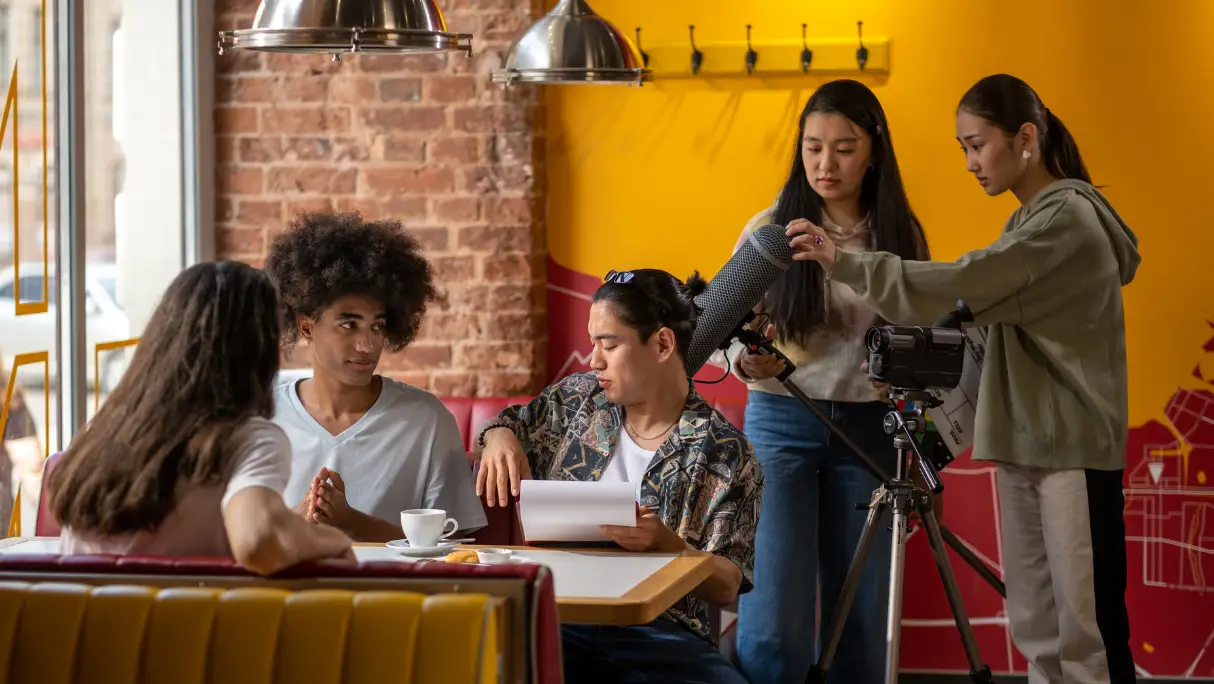Filmmaking is no longer bound by the physical limitations of a camera lens. Virtual cinematography is changing the way movies, TV shows, and digital content are made, allowing directors to capture cinematic scenes in fully digital environments, manipulate shots in post-production, and create impossible visuals that would be difficult or expensive to achieve with traditional filmmaking techniques.
Voxelrama is at the forefront of virtual production, helping filmmakers and studios integrate digital cinematography, 3D environments, and real-time rendering into their workflows. Here’s how virtual cinematography is shaping the future of filmmaking.
1. What is Virtual Cinematography, and How Does It Work?
Virtual cinematography is the process of creating, capturing, and manipulating cinematic shots in a digital environment. Unlike traditional cinematography, where cameras capture live footage on set, virtual cinematography allows filmmakers to shoot scenes within a computer-generated space using 3D assets, motion capture, and real-time rendering tools.
Using game engines like Unreal Engine and Unity, filmmakers can build fully immersive digital sets, place virtual cameras, and adjust lighting, framing, and effects in real-time. This allows for unprecedented creative flexibility without the need for costly reshoots.
Example: “A production team working on a sci-fi film used virtual cinematography to pre-visualize complex action sequences, ensuring that every shot was perfectly framed before stepping onto a physical set.”
2. The Advantages of Virtual Cinematography
Traditional film production requires on-location shoots, complex lighting setups, and extensive physical set design. Virtual cinematography offers several key advantages that save time and money while enhancing creativity:
- Real-Time Scene Adjustments: Directors can tweak lighting, camera angles, and environmental details instantly rather than waiting for post-production fixes.
- Unlimited Camera Movements: Virtual cameras allow for dynamic, impossible shots—such as flying through buildings, capturing perspectives that would be difficult with physical rigs, or adjusting the depth of field after filming.
- Faster Iterations: Because everything exists in a digital environment, changes can be made on the fly without requiring reshoots.
Example: “In a recent animated feature, a studio used virtual cinematography to adjust character framing and scene composition in real-time, improving the film’s pacing without requiring costly reanimation.”
3. Virtual Cinematography in Live-Action Films
Many of today’s biggest blockbusters and streaming productions use virtual cinematography to merge live-action with digital environments seamlessly.
- LED Volume Stages: Shows like The Mandalorian use massive LED walls powered by game engines to display real-time CGI environments behind actors, eliminating the need for green screens.
- Previsualization (Previs) Workflows: Directors can plan entire action sequences in 3D before filming, ensuring smooth execution on set.
- Digital Set Extensions: Filmmakers can shoot actors on small physical sets and expand the world digitally using 3D modeling and rendering.
Example: “A historical drama used digital set extensions to recreate an ancient city, allowing actors to perform in a small green-screen space while being digitally placed inside a grand, historically accurate location.”
4. How Virtual Cinematography Improves Animation and CGI Production
For fully animated films, game cinematics, and visual effects-heavy productions, virtual cinematography allows filmmakers to mimic real-world cinematography techniques inside digital spaces.
- Cinematographers can use virtual cameras with real-world controls to adjust focus, zoom, and depth of field.
- Motion capture and volumetric capture allow for natural, lifelike performances that blend seamlessly into CGI worlds.
- AI-assisted cinematography tools can suggest camera angles and compositions based on real-world film principles.
Example: “Voxelrama assisted a studio to develop an environment for use with its virtual camera system that allowed animators to ‘shoot’ scenes as if they were using a real handheld camera, adding authenticity to a digitally created war film.”
5. The Future of Virtual Cinematography and Real-Time Rendering
Advancements in real-time rendering technology are making virtual cinematography more accessible for productions of all sizes. Studios no longer need Hollywood-level budgets to incorporate these tools into their workflow.
- Real-time ray tracing allows CGI to achieve photorealistic quality without lengthy render times.
- Cloud-based virtual production is making it easier for remote teams to collaborate on projects from anywhere in the world.
- AI-powered scene generation is reducing the time required to build realistic environments, enabling indie creators to achieve big-budget visuals.
Example: “A small independent film used Voxelrama’s virtual cinematography expertise to create a complex sci-fi cityscape for a fraction of the cost of traditional VFX, allowing them to compete visually with blockbuster films.”
Conclusion
Virtual cinematography is revolutionizing how films, TV shows, and digital experiences are made. By blending the artistry of traditional cinematography with the power of real-time 3D rendering, filmmakers can create more immersive, visually stunning, and cost-effective productions.
Voxelrama is leading the charge in virtual production and digital cinematography, helping studios, directors, and VFX teams integrate this powerful technology into their projects. Whether you need previsualization, digital set design, or virtual cinematography consulting, Voxelrama can help you bring your vision to life.
How do you think virtual cinematography will shape the future of filmmaking? Would you use it for your next production?
Read answers to our Frequently Asked Questions (FAQ) from clients on this link.

